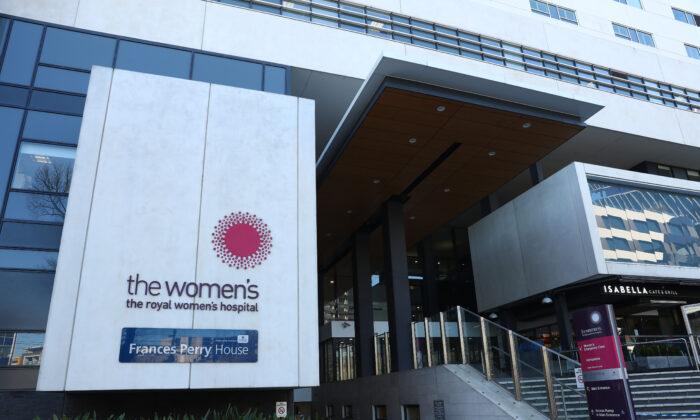Victorian hospitals will be overhauled but not forced to merge following a scathing review finding the health system no longer fit for purpose.
The state government has accepted all but one of 27 recommendations, either in full or principle, from an expert review that highlighted the need for “fundamental change.”
A key suggestion to forcibly amalgamate some of Victoria’s 76 separate public health services was categorically rejected.
“We will not be forcing hospitals to amalgamate because I’m not convinced that that’s in the best interest of patient care,” Premier Jacinta Allan told reporters in Epping on Aug. 8.
The public health entities will instead be grouped into 11 local networks based on geography with shared payroll, IT, and electronic medical records to replace any paper systems.
An extra $1.5 billion (US$1 billion) will also be poured into hospitals following fears services would be forced to slash staff numbers under mooted funding cuts.
Allan said the funding lifeline, on top of $8.8 billion (US$5.8 billion) outlined in the state budget, would be brought to book in the mid-year budget update.
“We remain on track to deliver that surplus in the 2025/26 financial year as previously committed,” she said.
The premier denied backlash over hospitals being told to tighten their belts had forced the government to revise its budget for this financial year.
“There was more funding than ever before provided to hospitals as part of this year’s budget,” she said.
“Working on rolling out that funding hospital by hospital, it became apparent through that conversation that that additional funding that we provided needed to be added to.”
The top-up funding would guarantee no reduction in frontline services or frontline job losses, Health Minister Mary-Anne Thomas said.
But those working in what the premier dubbed the “back office bureaucracy” could find themselves out of work, with new agency Hospitals Victoria set up to identify back-office functions to consolidate.
Allan could not say whether dozens or hundreds of back-office staff would lose their jobs in the process, though she confirmed no change to hospital executive and board structures.
The expert review and funding negotiations for the 2024/25 financial year had fuelled months of speculation that regional health services would be forced to amalgamate.
It found health workforce shortages were amplified by competition between services in the same geographic region, while poor co-ordination between them led to delays for patients.
“While Victoria’s health services system has performed well in the past, its design is no longer fit-for-purpose and impedes best efforts to meet current and future challenges,” the report stated.
“The current system structure does not support all health services to deliver care as safely as possible.”
The review proposed consolidating the Peter MacCallum Cancer Centre, Royal Melbourne Hospital and Royal Women’s Hospital into one network, as well as incorporating cross-border service Albury Wodonga Health into a network in northern Victoria.
The peak body representing public and community health services across Victoria welcomed the end of the funding uncertainty.
“We must not repeat the mistakes of the past few months,” Victorian Healthcare Association (VHA) chief executive Leigh Clarke said.
“The Victorian government has listened to the VHA’s concerns, and the concerns of the sector, but there is more to unpack in the days ahead.”
Opposition health spokeswoman Georgie Crozier claimed the proposed changes were “amalgamations by stealth” and criticised the government’s handling of the issue.
“This is an enormous backflip by the government and it just demonstrates the chaos and dysfunction that is ongoing,” she said.







